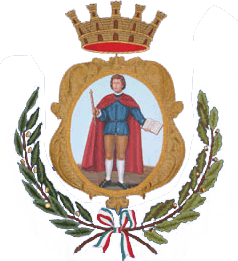
The origins of Morra are very old. Contrary to what you may see, the name of the country derives from the feudal family of the place, the principles Biondi-Morra, but from the name, which means “high ground”, “mound”, “cairn”, then a place built on a rise (c.ca 820 m.), in a rocky area. Dialect morres the word “murricine”, also means “heap of stones”.
The archaeological finds discovered in 1985, proving the existence of settlements already in the time of culture of Oliveto-Cairano, which developed between the ninth and sixth century BC in the upper valley Ofanto and Sele. The pottery found in the necropolis of Plan Cerasulo, used in a span of over two hundred years between VIII and V century. C., testify to the continuity of a significant settlement sannitico. Inside it was discovered eighteen oldest tombs of Irpinia, with its funeral. Other tombs dating from the fifth century. C. testify to the influence of the greek coast. After the revolt of 80 in Irpinia. C., Morra was conquered by the Romans led by Sulla and his lands were distributed to the Ligurian. It was boosted agriculture with a massive and destructive work of deforestation, creating the typical centuriations. Alta Irpinia had a good network of roads, including the Domizia, and the Appia passing a few kilometers from where it was placed Morra current station Sub Romula. Because of its strategic position on the Ofanto was continuously involved in the wars between the Lombards, Byzantines and Saracens. Most likely it is to this period the tomb of a woman, found in Serro Torone in the resort Caputi / San Vitale, along with a processional cross and a beautiful golden disc fibula monetiforme tomb that had a cover stone gabled with acroteria and epigraph, definitely a reuse of the late Roman Empire. From 847 to 1094, you have three earthquakes. In this period Morra is one of the fortified castles that go the Gastaldato of Conza. At the beginning of ‘200 fiefs of Morra included, as well as land in the Cilento and Vulture, also Teora, Caposele, Calabritto, Sant’Angelo dei Lombardi, Lioni, leading up to the Valley and Frigento where even today the ruins of a resist fortress called “the Peach of Morra”.
The Morra family (named after a leader who fought here goto Morras in the war greek-Gothic centuries before) was involved in the unsuccessful conspiracy of Capaccio (1245-1246) against the Emperor Frederick II, who, severely punished family members and He revoked many possessions. In 1320 it begins forty years in which the campaigns Morra are infested by brigands; remain particularly famous bands and Mariotto Ursillo, arriving to count to 400 men.
Then passed to the Zurlo and the country returned to the Caracciolo Morra from 1618 until the abolition of feudalism (1806). Its middle class took part in the uprisings. He was the birthplace of Francesco De Sanctis (1817 – 1883), the great political and literary critic, who in 1848 took part in the revolution of Naples, who was arrested and imprisoned for three years in Castel dell’Ovo, September 9, 1860 he was appointed Governor of Avellino from Garibaldi. In 1861 he was elected deputy to the national parliament and became the first Minister of Education of the Kingdom of Italy (Cavour government). At the beginning of 900 morresi many left the country for the Americas and, later, for Switzerland. Since 1934 Irpina Morra Morra De Sanctis was called in honor of the great countryman. In September 1943 Morra, as the upper valley of the Ofanto, witnessed the Allied air raids on German troops passing through the saddle of Conza. He suffered the fury of the earthquake of 1980, after the one in 1694, destroyed seventy percent of the country. Thanks to a generous solidarity activities the country has come out of its state of emergency.

 Add to favorites
Add to favorites